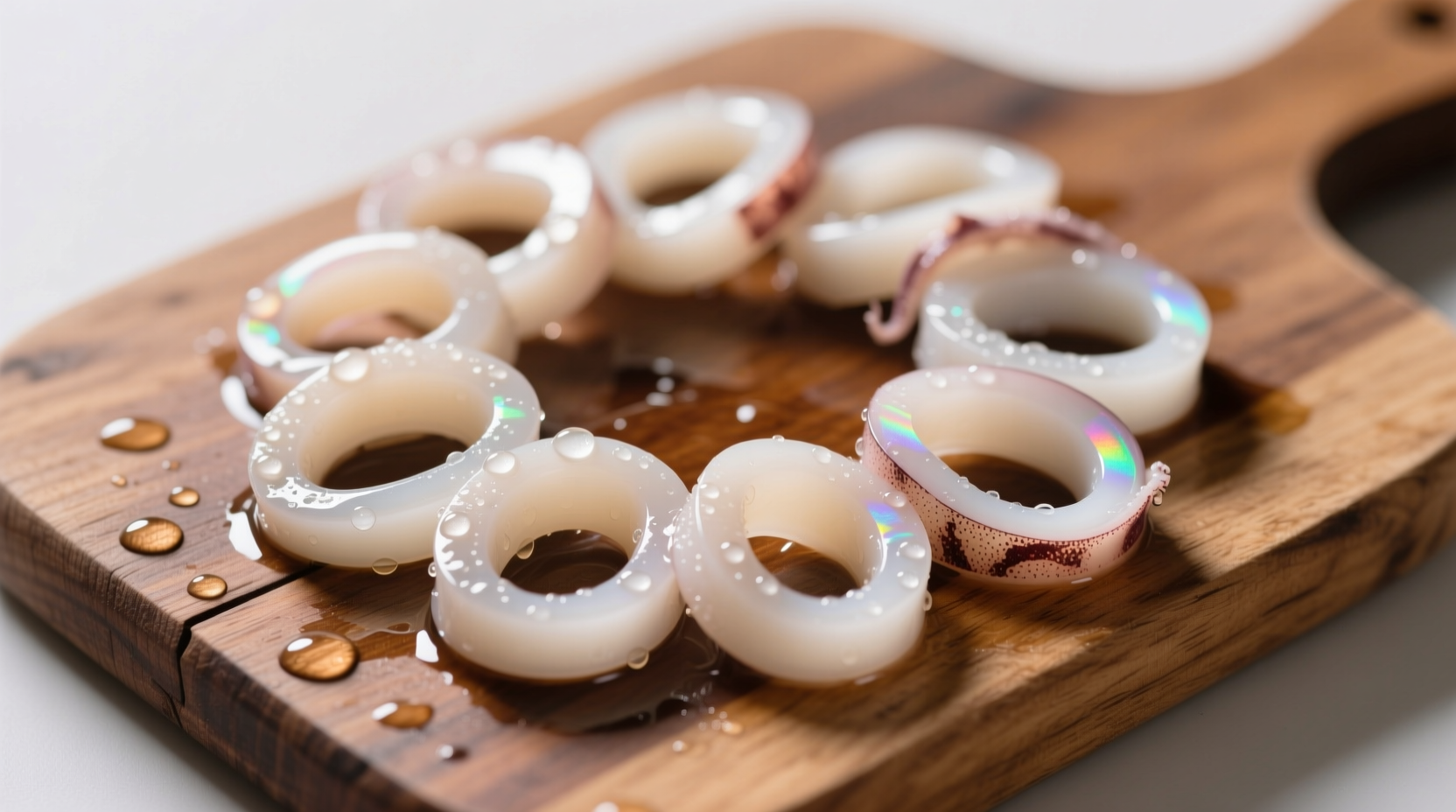Ever wondered what squid tastes like before ordering calamari at a restaurant or trying it at home? Understanding squid's flavor profile helps you decide whether to give it a try and how to prepare it for the best experience. This guide cuts through common misconceptions and gives you exactly what you need to know about squid's taste, texture, and how cooking methods transform its flavor.
The Essential Flavor Profile of Squid
When perfectly cooked, squid delivers a clean, delicate taste that seafood lovers appreciate. Unlike stronger fish varieties, squid has a neutral base flavor with a hint of natural sweetness—similar to scallops but less pronounced. The oceanic quality is present but subtle, more like a whisper of the sea than an overwhelming fishiness. This mildness makes squid an ideal canvas for sauces and seasonings.
Food science explains why squid tastes the way it does. According to research published in the Journal of Food Science, squid contains glutamate compounds that contribute to its umami quality, along with small amounts of glycine that create its characteristic sweetness. These natural compounds work together to create a flavor profile that's more complex than many realize.
| Seafood Type | Flavor Intensity | Sweetness Level | Texture When Cooked Properly |
|---|---|---|---|
| Squid | Mild | Moderate | Tender, slightly firm |
| Shrimp | Moderate | High | Firm, springy |
| Octopus | Moderate | Low | Meaty, dense |
| Salmon | Strong | Very Low | Flaky, oily |
Why Texture Makes or Breaks the Taste Experience
Many people mistakenly believe squid tastes rubbery—but this is almost always a texture issue, not a flavor problem. Fresh squid has a tender, almost buttery mouthfeel when cooked correctly. The common rubbery texture occurs only when squid is overcooked.
Professional chefs understand that squid requires precise cooking times. As Antonio Rodriguez explains from his experience in Michelin-starred kitchens: "Squid has two perfect windows for cooking—very quick at high heat (1-2 minutes) or very slow at low heat (30+ minutes). Anything in between creates that unpleasant rubbery texture people associate with bad calamari."

How Preparation Methods Transform Squid's Flavor
The way squid is prepared dramatically affects both taste and texture. Understanding these differences helps you choose preparations that match your flavor preferences:
- Fried (Calamari): The most common preparation in Western restaurants. Quick frying creates a light, crispy exterior while keeping the interior tender. The batter or coating adds flavor, while the squid itself maintains its mild sweetness.
- Grilled: Direct high heat creates beautiful char marks and concentrates the natural sweetness. Lemon and herbs complement squid's delicate flavor without overwhelming it.
- Raw (as sashimi): When exceptionally fresh, squid can be served raw with just a touch of citrus or soy. This preparation showcases the purest flavor profile—clean, sweet, and refreshing.
- Stewed or Braised: Longer cooking times (45+ minutes) break down tougher fibers, creating a tender, almost meaty texture that absorbs rich sauces beautifully.
Regional Flavor Variations You Should Know
Squid appears in coastal cuisines worldwide, with preparation methods that highlight local flavor preferences:
In Mediterranean cooking, squid often appears in calamari ripieni (stuffed squid) with tomato-based sauces that complement its sweetness. Asian preparations frequently feature squid in stir-fries with ginger, garlic, and chili, or served raw as ojingeo-hoe in Korean cuisine. Each tradition has evolved specific techniques to maximize squid's best qualities while minimizing potential drawbacks.
The Food and Agriculture Organization (FAO) notes that squid consumption patterns have evolved significantly over the past century. Once considered primarily bait in many Western countries, squid has gained popularity as culinary techniques for proper preparation have spread globally. This historical shift demonstrates how understanding proper preparation transforms perception of this versatile seafood.
Practical Tips for First-Time Squid Tasters
If you're new to squid, these tips will ensure the best possible introduction:
- Start with grilled preparation rather than fried—it showcases the pure flavor without batter interference
- Look for "tenderized" on menus if ordering calamari, indicating proper preparation
- Pair with citrus like lemon or yuzu which enhances the natural sweetness
- Avoid overcooking at home—30-90 seconds in hot oil or 2-3 minutes on a hot grill is usually sufficient
- Try it in a mixed seafood dish first if you're hesitant, so squid isn't the dominant flavor
Remember that freshness dramatically affects taste. According to NOAA's seafood guidelines, fresh squid should have a clean ocean scent (not fishy), firm texture, and slightly translucent appearance. Avoid squid that smells strongly of ammonia, as this indicates improper storage.
Debunking Common Squid Taste Myths
Let's address some persistent misconceptions that might be holding you back from enjoying squid:
Myth: "Squid tastes extremely fishy."
Reality: Fresh squid has minimal fishiness—less than many white fish varieties. Any strong fishy taste indicates improper handling or storage.
Myth: "All squid is rubbery."
Reality: Rubberiness comes from overcooking. Properly prepared squid has a delightful tender texture.
Myth: "Squid and octopus taste identical."
Reality: While related, they have distinct profiles. Octopus has a stronger, meatier flavor and denser texture compared to squid's mild sweetness.
Final Thoughts: Embracing Squid's Culinary Potential
Squid's mild flavor and versatile texture make it a rewarding ingredient to explore. Whether you're ordering calamari at a restaurant or trying your hand at cooking squid at home, understanding its flavor profile helps set proper expectations. Start with simple preparations that highlight its natural sweetness, pay attention to cooking times, and you'll discover why squid has become a beloved ingredient in coastal cuisines around the world.











 浙公网安备
33010002000092号
浙公网安备
33010002000092号 浙B2-20120091-4
浙B2-20120091-4